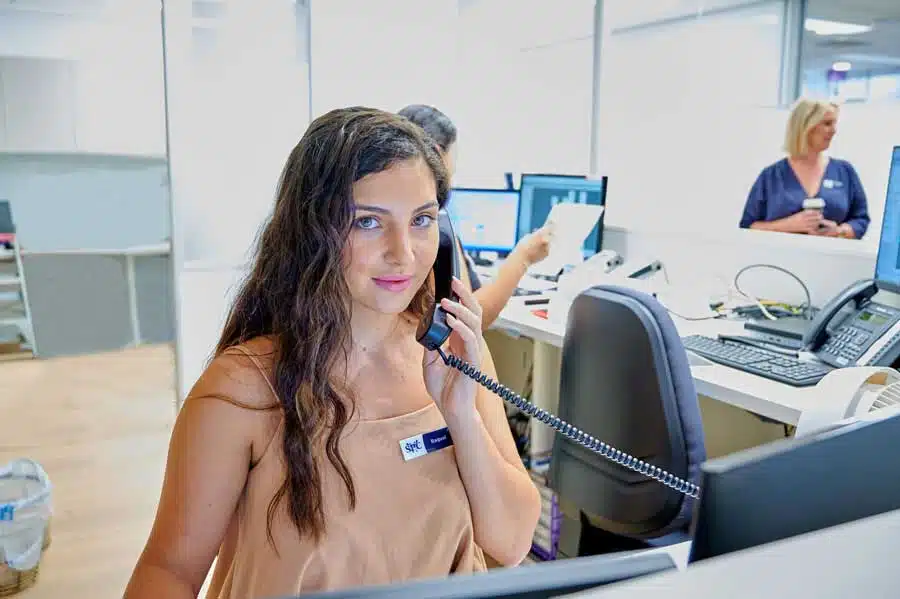C-section Recovery
A caesarean delivery, or C-section, may be planned or unplanned, but either way it is major abdominal surgery. We often find women are unsure on how to best look after their bodies after such surgery. Here are a few tips to aid in recovery over the first 6 weeks after a caesarean delivery:
1. Listen To Your Body
It is normal to experience pain in the first few weeks post caesarean, the amount of pain experienced will differ from woman to woman. Take pain relief as required in the early days, as this will allow you to gently move around more comfortably. You will become more mobile each day, but be sure to listen to your body, if you over-do it you may experience more pain or swelling around your incision, take that as your cue to take a break.
2. Catch Up On Some Sleep
This one is easier said than done, but if you have some support at home, aim for a nap per day, your body is recovering from abdominal surgery and needs the rest to help with healing.
3. Be Mindful Of How You Move
Aim to log roll out of bed to avoid any extra pressure over your incision. If you are standing up from a chair, gently contract your lower abdominals or use your hand to support your belly to give your incision some extra support.
4. Consider Using Compression Support Garments
Support shorts or leggings such as SRC or Solidea provide compression around your abdominals and pelvis. The compression can help make your tummy feel more comfortable and promote blood flow to the incision for healing!
5. Gentle Movement
As you begin to feel more comfortable, you can begin going for short walks. Try to avoid using the carrier in the first 4 weeks, as it may rub against your incision. Aim to push your baby in a (light) pram. When you return home (usually after 4-5 nights), you can begin some stretching as tolerated and gentle exercises such as the ones shown below.
TrA Contraction: Gently contract your lower abdominals while lifting one leg, and pull the band apart.
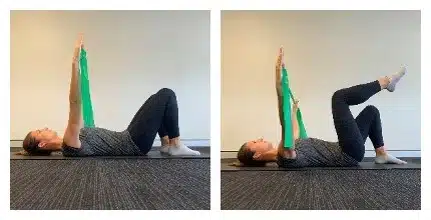
Bridge: Contract. your glutes as you lift then lower your hips.
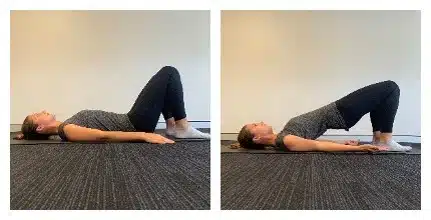
Pelvic Tilt: Gently rock pelvis forward and back.
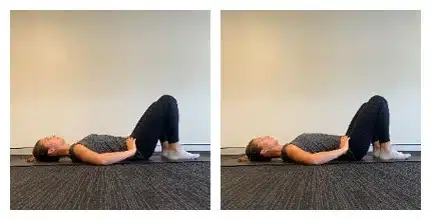
Cat / Cow Stretch: Arch and curve your back as comfort allows.
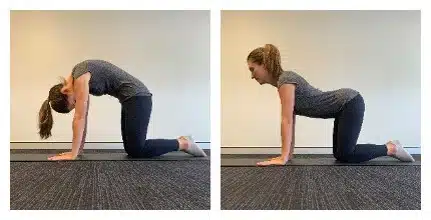
Thoracic Rotation: Drop your knees to one side, keeping your shoulders grounded to the ground.
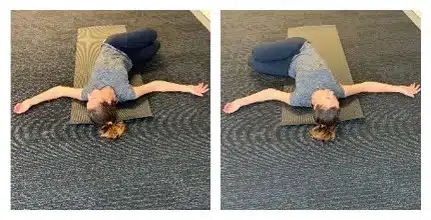
Massage Your Scar
Your incision may feel numb or tender, you may also notice sensations of tightness or pulling on one side as it heals. The aim of the massage is to reduce adhesions and scar tissue, promote healing and desensitise the incision area. Your physiotherapist can show you how to massage your scar, you will need to use a small amount of oil (bio-oil or olive oil work well), or cream of your choice. Apply a moderate amount of pressure over and around your scar, it should be tolerable enough to breathe comfortably, and feel more comfortable as you continue. Aim for 3 minutes daily once your incision has fully closed and you’ve had it checked by your GP or obstetrician.
What’s Happening?
It is perfectly normal for post-natal women to experience pelvic health conditions and appropriate exercise and treatment returns most women to their pre-pregnancy state. We highly recommend all women have a 6 week Post-Natal Assessment with one of our highly trained pelvic Physiotherapists, regardless of delivery type. Our Post-Natal Assessment will allow your pelvic physiotherapist to personalise the rehabilitation of your abdominals, pelvic floor and scar to enable you to return safely to the activities you enjoy. Book a Post-Natal Assessment with one of our experienced Physiotherapists today.
Focused Shockwave Therapy for Caesarean Section Scarring
Both the superficial skin scars and even the deep muscle scars from your C-section can be helped via Focused Shockwave Therapy, which is also used for a number of other conditions. The healing of the abdominal wall will be significantly improved and so will the sliding layers. Excessive scar formations and scar discoloration are reduced too.
What is Focused Shockwave Therapy?
Focused Shockwave Therapy involves a device, called a wand, which is placed over the scar. The device will be moved, for a total of 15 minutes, as it emits gentle pulses. The pulses can penetrate right below the skin’s surface and can help to break up scar tissue on a cellular level, so that it can heal. The result is far stronger and more flexible tissue. This restores mobility in this area and makes the scar less uncomfortable. Shockwave Therapy is a relatively painless treatment and anesthetic is not required. Shockwave Therapy is an evidence-based treatment, which has been in use in clinical practices since 1982. Book a consultation today and ask your treating physio whether Shockwave Therapy could be right for you.
